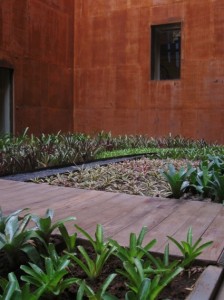
Photo © Michael Sommers.
The other weekend, I was invited with my boyfriend, Barbosa, and his close friend, Walber, to take a weekend road trip from Diamantina to Belo Horizonte. With a population of 45,000, Diamantina is small, and despite the town’s charm and myriad attractions – not to mention those of the surrounding region which are legion – things can get a little…. well, small…. Within Barbosa’s social circle, it seems as if every weekend, a couple or group of friends is hightailing it off to BH for a fix of Big City. This weekend, it was our turn.I’ve been to Belo Horizonte a few times before, but always coming from other big Brazilian cities. This time felt different because I arrived after weeks in Diamantina, i.e. the Interior. Moreover, I arrived with a pair of Diamantinenses (one born there and the other a transplant), and we were staying in the apartment of a third Diamantinense. It was an interesting filter through which to experience the capital of Minas.
The city is more tranquil, organized, cleaner, and less chaotic than other large Brazilian metropolises.Despite being one of Brazil’s largest cities (6th in terms of population), Belo Horizonte draws more business travelers than tourists. A relatively new city (it was officially founded in 1897) and a planned one a that, it lacks the texture and layers of history of some of Brazil’s older state capitals. It also lacks their beauty – not to mention water (the absence of an ocean or river makes for relentlessly hot summers) – although it is surrounded by the picturesque peaks of the Serra do Curral mountains, which explains the name of Belo Horizonte (Beautiful Horizon).
And yet, I’ve always been quite fond of “BH”, as its referred to by the locals. The city is more tranquil, organized, cleaner, and less chaotic than other large Brazilian metropolises. Ideal for leisurely walking, its sidewalks, many of them shaded by leafy trees, are sprinkled with cafés and bars – Belo Horizonte famously boasts more botecos per capita than any other Brazilian city – serving wonderful things to eat and drink. BH isn’t loud, dangerous, scene-y, tacky, or pretentious. It’s understated, and actually quite pleasant.
While Belo Horizonte isn’t a classic tourist destination, over the last couple of years, the city has made major investments in its leisure and cultural offerings. The biggest and brightest example of this phenomenon has taken place around the square that comprises the city’s geographical and symbolic heart: Praça da Liberdade.
This elegant square is anchored by a verdant park, whose geometric lay-out of lawns, flower beds, statues and fountains is modeled after the gardens at the Palace of Versailles. Traditionally, Praça da Liberdade was where political power in Minas was concentrated. Before the 2010 inauguration of the new Cidade Administrativa, a fabulously futuristic ensemble of buildings designed by Oscar Niemeyer, the ornate 19th-century edifices surrounding the square were home to various state government ministries as well as the governor’s palace.
Today, as part of the creation of a new Circuito Cultural da Praça da Liberdade, these historic buildings are all being converted into cutting-edge museums such as the Museu das Minas e do Metal, (occupying the former Secretary of Education), which pays homage to the activity that’s synonymous with Minas itself – mining – with a host of high-tech interactive exhibits along with some cool rocks and minerals. Also new on the block is the Espaço TIM UFMG do Conhecimento, a natural history museum whose exhibitions are less interesting than the state-of-the-art planetarium from which you can gaze at the heavens above. Meanwhile, currently in the works are the Centro Cultural Banco do Brasil, a multi-purpose arts and cultural center, and the Centro de Arte Popular do CEMIG, which will provide a panorama of artesanato produced throughout the state.
However, the new museum I was most looking forward to visiting – and which we did actually get to explore on a sunny Saturday afternoon – was the Memorial Minas Gerais – Vale. Occupying a handsomely renovated 1897 palace that once housed the Secretary of Finance, this museum was awarded a prize as Novidade (Novelty) of the Year, in 2012 by Brazil’s Guia Quatro Rodas (the Brazilian equivalent of the Michelin guide).
Owned by Vale, a Minas-based multinational that is the second large mining company in the world, the Memorial does an admirable job of capturing Minas’s essence with creatively curated displays devoted to the state’s history and culture. Most are organized around key themes ranging from celebrations and fashion to baroque architecture and Afro-Mineiro culture. Others are dedicated to prominent Mineiros ranging from 18th-century rebel Tiradentes to 20th-century photographer Sebastião Salgado. Wandering from room to room, and floor to floor, is like wandering around Minas Gerais and gleaning insights into what makes the place – its people – different from the rest of Brazil.
Despite the abundance of visuals, objects, and interactive media, non-Portuguese speakers might be frustrated by the lack of audio and textual materials in English. Yet, even in their absence, an hour in the Memorial is enough to build up your hunger to go out and explore various parts of the state as well as build up a thirst – which can be easily quenched by savoring local blends of coffee and/or cachaça, two Mineiro specialties that can be sampled in the stylishly designed café/bar overlooking an inner garden (featured above).